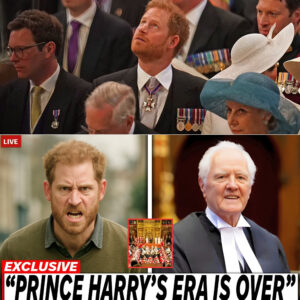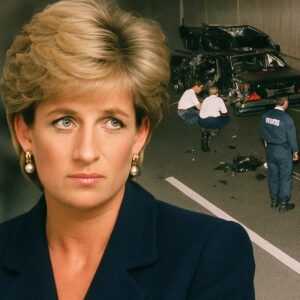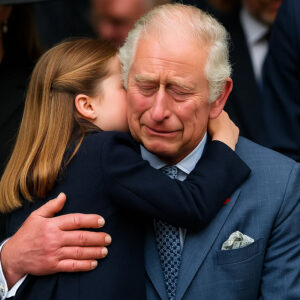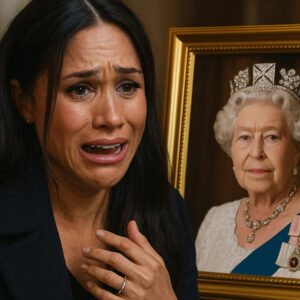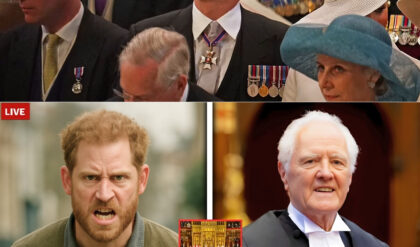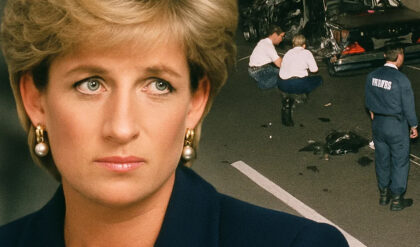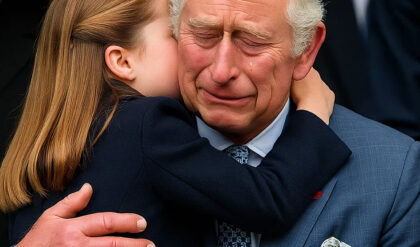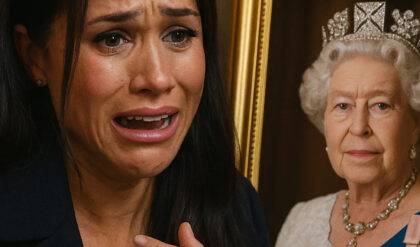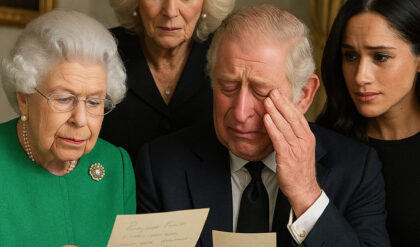Diana’s Prophecy: How a Letter, a Trial, and a Granddaughter Shook the Crown

For twenty-six years, Diana’s death was framed as a tragic accident — Paris, 1997, forever frozen in memory. The world wept, the monarchy carried on, and the official line was repeated until it hardened into stone.
But this summer, the stone cracked. And once it cracked, it could never be put back together.
The Freeze: The Discovery
It began in the archives of Kensington Palace. Among Diana’s belongings lay a folded letter, written in her unmistakable looping script. Its words were chilling:
“If they touch me, look to Camilla.”
In the 1990s, it had been dismissed as paranoia. But this time, the letter landed in the hands of her eldest son, Prince William.
Within days, a covert audit known as Operation Orchid surfaced something darker: an MI6 audio reel dated mere weeks before Diana’s death. The tape carried phrases that chilled even seasoned investigators — “stabilize the situation … manage the princess … ensure succession security.”
What had once been whispers now sounded like conspiracy.
The Twist: The Emails and the Wire
While Operation Orchid combed through records, Princess Anne was running her own inquiry. What she discovered was shocking: a $2.4 million wire transfer routed through a palace-linked charity, just weeks before the Paris crash.
Then came the emails — their subject lines like daggers: “contingency options” … “neutralization risk.”
Line by line, the paper trail matched Diana’s letters. What had been speculation was now evidence.
Crowds gathered at Kensington gates, clutching candles, banners, and roses. “JUSTICE FOR DIANA,” they cried. Britain had seen royal scandal before — but never like this. This time, it wasn’t about reputation. It was about legacy itself.
The Collapse: William’s Warrant
For the first time in modern history, an heir moved against the sitting Queen Consort. Prince William invoked the seldom-used Crown Integrity Act, issuing a warrant against Camilla herself.
She was confined to palace apartments while Westminster Hall prepared for a tribunal. The nation held its breath as cameras captured her silent, stony-faced arrival. Outside, protesters shouted Diana’s name in thunderous waves.
The trial transfixed the country. Witnesses testified. Emails were read aloud. And then William took the stand. His words seared into history:
“My mother was hunted. She told us who was behind it. Today, I stand for her.”
Gasps echoed through the chamber. For millions watching live, it was the moment history split open.
Days later, the verdict fell like a guillotine: guilty of conspiracy and breach of trust. Camilla’s crown stripped. Her exile decreed. Her destination: a remote estate on the Isle of Skye.
As guards escorted her out, she whispered three words to her aide: “This isn’t finished.”
The Aftermath: Charlotte and Catherine Rise
In the shadow of Camilla’s downfall, Catherine, Princess of Wales, stepped forward. She created the Wales Legacy Trust, transferring Diana’s treasured belongings — tiaras, letters, and archives — to young Princess Charlotte.
The symbolism was seismic. Diana’s legacy wasn’t just preserved; it was passed down.
In Diana’s memorial garden at Althorp, Charlotte laid a single white rose at the fountain. Cameras captured the moment: the granddaughter of the “People’s Princess” reclaiming a history once buried in scandal.
The nation erupted. Hashtags like #DianaLives and #QueenCatherine surged online. Streets filled with candlelit marches, dubbed The Diana Marches, demanding transparency and celebrating a monarchy reborn from its wounds.
Parliament launched new inquiries into Charles and Camilla’s finances. Meanwhile, Catherine’s popularity skyrocketed — eclipsing even Queen Elizabeth’s among younger Britons.
The Dawn of a New Monarchy
By autumn, Catherine unveiled the Diana Charlotte Legacy Fund, funneling millions into mental health and children’s welfare — causes Diana had once championed. Donations poured in from around the globe.
Public sentiment shifted irreversibly. Charles retreated into silence. Camilla remained in exile. And William, Catherine, and Charlotte became the monarchy’s moral anchor.
Historians whispered the word that Buckingham Palace fears more than any other: succession.
The Cold Line
Diana’s story began as tragedy. But it did not end in Paris.
It ends as prophecy.
Her warning letter.
Her hidden evidence.
Her son’s courage.
Her granddaughter’s inheritance.
Together, they delivered the reckoning she once predicted.
The monarchy thought Diana’s voice was silenced that night in Paris. Instead, it echoes louder than ever — through Charlotte, through Catherine, and through a Britain finally ready to face the truth.
And perhaps, for the first time, the crown no longer rests on secrecy. It rests on Diana’s revenge.
News
House of Lords Launches SHOCKING Petition to Strip Harry of ALL Royal Titles: “Exiled for eternity from the Royal Palace!
House of Lords Launches SHOCKING Petition to Strip Harry of ALL Royal Titles: “Exiled for eternity from the Royal Palace! House of Lords Launches SHOCKING Petition to Strip Prince Harry of ALL Royal Titles!!! In a stunning twist that’s rocking…
“On-Air Explosion: Whoopi Goldberg Drops a Meghan Markle Truth Bomb That Left the Studio in Total Chaos”
“On-Air Explosion: Whoopi Goldberg Drops a Meghan Markle Truth Bomb That Left the Studio in Total Chaos” It was supposed to be just another lively discussion on The View—but within minutes, the atmosphere turned electric. Whoopi Goldberg leaned forward, cut…
After Nearly 3 Decades, Princess Diana’s Crash Mystery FINALLY SOLVED And It’s Way Worse Than We Thought
After Nearly 3 Decades, Princess Diana’s Crash Mystery FINALLY SOLVED And It’s Way Worse Than We Thought The tragic death of Princess Diana in a Paris car crash on August 31, 1997, remains one of the most haunting mysteries in…
Princess Charlotte Moves Grandpa King Charles to Tears with Heartwarming Gesture
Princess Charlotte Moves Grandpa King Charles to Tears with Heartwarming Gesture The grandeur of Westminster Abbey was in full force: the vaulted ceilings echoing with choir hymns, golden light streaming through stained glass, the gathered weight of history pressing down…
“Meghan Markle Trembles: The Heartbreaking Truth Queen Elizabeth II Carried in Silence for 70 Years”
“Meghan Markle Trembles: The Heartbreaking Truth Queen Elizabeth II Carried in Silence for 70 Years” For seven decades, Queen Elizabeth II was the unshakable face of the British monarchy—a woman who endured wars, scandals, betrayals, and family crises with composure…
“Meghan Markle LOSES CONTROL: Taylor Swift’s Engagement Sparks Royal Jealousy and a Public Meltdown”
“Meghan Markle LOSES CONTROL: Taylor Swift’s Engagement Sparks Royal Jealousy and a Public Meltdown” For years, Meghan Markle has tried to cement her place in the glittering world of celebrity power couples. But when Taylor Swift’s engagement went public, the…
End of content
No more pages to load



